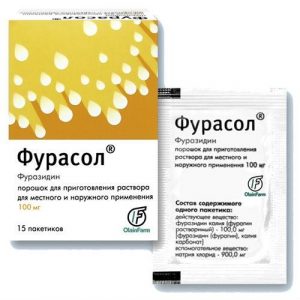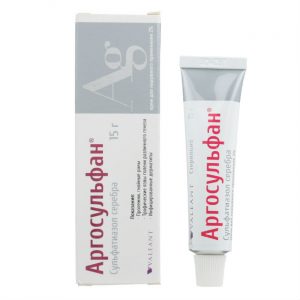Description
Release form
Tablets.
Packing
10 pcs.
Pharmacological action
Broad-spectrum antimicrobial agent from the group of fluoroquinolones. It acts on the bacterial enzyme DNA gyrase, which provides supercoiling and, thus, the stability of bacterial DNA (destabilization of DNA chains leads to their death). It has a bactericidal effect.
The drug is active against microorganisms that produce -lactamases and fast-growing atypical mycobacteria.
Sensitive to the preparation: Staphylococcus aureus, Staphylococcus epidermidis, Neisseria gonorrhoeae, Neisseria meningitidis, Escherichia coli, Citrobacter spp., Klebsiella spp. (including Klebsiella pneumoniae), Enterobacter spp., Hafnia spp., Proteus spp. (including Proteus mirabilis, Proteus vulgaris – indole-positive and indole-negative strains), Salmonella spp., Shigella spp. (including Shigella sonnei), Yersinia enterocolitica, Campylobacter jejuni, Aeromonas hydrophila, Plesiomonas aeruginosa, Vibrio cholerae, Vibrio parahaemolyticus, Haemophilus influenzae, Chlamydia spp., Legionella spp., Serdellia dellisella, Paratomia seriella dellisella, Paratomia seriella, Deriella dellisella, Seriella dellisella spp. pertussis, Moraxella catarrhalis, Propionibacterium acnes, Brucella spp.
Different sensitivity to the drug are possessed by: Enterococcus faecalis, Streptococcus pyogenes, Streptococcus pneumoniae, Streptococcus viridans, Serrratia marcescens, Pseudomonas aeruginosa, Acinetobacter spp., Mycoplasmauretum funumium, Mycoplasmauretomyffonia pneumonia Corynebacterium spp., Helicobacter pylori, Listeria monocytogenes, Gardnerella vaginalis.
Nocardia asteroides, anaerobic bacteria (Bacteroides spp., Peptococcus spp., Peptostreptococcus spp., Eubacterium spp., Fusobacterium spp., Clostridium difficile) are resistant to the drug.
The drug is inactive against Treponema pallidum.
Indications
infectious and inflammatory diseases of the respiratory tract (bronchitis, pneumonia)
infectious and inflammatory diseases of the ENT organs (sinusitis, pharyngitis, otitis media, laryngitis)
infectious and inflammatory diseases of the skin and soft tissues
inflammatory diseases
infectious and inflammatory diseases of the abdominal cavity (including gastrointestinal infections) and biliary tract
infectious and inflammatory diseases of the kidney (pyelonephritis) and urinary tract (cystitis, urethritis)
infectious and inflammatory diseases of the pelvic organs (endometritis, salpingitis, oophoritis, cervicitis, parametritis, prostatitis) and genital organs (colpitis, orchitis, epididymitis)
gonorrhea
chlamydia
meningitis
infection prevention of infection including with neutropenia).
Contraindications
glucose-6-phosphate dehydrogenase deficiency
epilepsy (including history)
lowering of the seizure threshold (including after a head injury, stroke, or inflammatory processes in 18 cns) since skeletal growth is not completed)
pregnancy
lactation (breastfeeding)
hypersensitivity to the components of the drug.
With caution, a drug should be prescribed for atherosclerosis of cerebral vessels, cerebrovascular accident (history), chronic renal failure, organic central nervous system lesions.
Special instructions
Not a drug of choice for treating pneumococcal pneumonia, not indicated for the treatment of acute tonsillitis.
During the treatment period, it is necessary to refrain from driving vehicles and engaging in potentially hazardous activities that require an increased concentration of attention and speed of psychomotor reactions. Do not drink alcohol.
Against the background of treatment with the drug, hygienic tampons such as Tampax should not be used, due to the increased risk of thrush.
During treatment, the course of myasthenia gravis, frequent porphyria attacks in susceptible patients are possible.
False negative results are possible with bacteriological diagnosis of tuberculosis (prevents the release of Mycobacterium tuberculosis).
Dosage and administration
Inside, before or during a meal, whole, washed down with water. Doses are selected individually depending on the location and severity of the infection, as well as the sensitivity of microorganisms, the general condition of the patient, and liver and kidney function.
Adults – 200-800 mg per day, course of treatment – 7-10 days, frequency of use – 2 times a day. Dose up to 400 mg – in 1 dose, preferably in the morning. With gonorrhea – 400 mg once.
In patients with impaired renal function (with Cl creatinine 5020 ml / min), a single dose should be taken 1 time per day or 50% of the average dose 2 times a day. With Cl creatinine less than 20 ml / min, a single dose is 200 mg, then 100 mg per day every other day.
With hemodialysis and peritoneal dialysis, 100 mg every 24 hours. The maximum daily dose for liver failure is 400 mg.
The duration of the course of treatment is determined by the sensitivity of the pathogen and the clinical picture of the treatment should be continued for at least 3 days after the disappearance of the symptoms of the disease and complete normalization of temperature. In the treatment of salmonellosis, the course of treatment is 7-8 days, with uncomplicated infections of the lower urinary tract – 3-5 days.
For children – only for health reasons, if it is impossible to replace with other drugs. The average daily dose is 7.5 mg / kg, the maximum is 15 mg / kg.
Side effects of
From the digestive tract: gastralgia, anorexia, nausea, vomiting, diarrhea, flatulence, abdominal pain, increased activity of hepatic transaminases, hyperbilirubinemia, cholestatic jaundice, pseudomembranous enterocolitis.
On the part of the nervous system and sensory organs: headache, dizziness, lack of movement, tremors, cramps, numbness and paresthesias of the limbs, intense dreams, nightmare dreams, psychotic reactions, anxiety, state of excitement, phobias, depression, confusion, hallucinations , increased intracranial pressure, impaired color perception, diplopia, impaired taste, smell, hearing and balance. When applying the ointment – a burning sensation and discomfort in the eyes, hyperemia, itching and dryness of the conjunctiva, photophobia, lacrimation.
From the musculoskeletal system: tendonitis, myalgia, arthralgia, tendosynovitis, tendon rupture.
From the side of the cardiovascular system and blood (hematopoiesis, hemostasis): tachycardia, decreased blood pressure (with iv administration, a sharp decrease in blood pressure is stopped), vasculitis, collapse of leukopenia, agranulocytosis, anemia, thrombocytopenia, pancytopenia, anemolytic and aplastic.
Allergic reactions: skin rash, itching, urticaria, allergic pneumonitis, allergic nephritis, eosinophilia, fever, Quincke’s edema, bronchospasm, Stevens-Johnson and Lyell syndrome, photosensitivity, erythema multiforme, rarely anaphylactic shock.
From the skin: spot hemorrhages (petechiae), hemorrhagic bullous dermatitis, papular rash with a crust, indicating vascular damage (vasculitis).
From the genitourinary system: acute interstitial nephritis, impaired renal function, hypercreatininemia, increased urea.
Other: dysbiosis, superinfection, hypoglycemia (in patients with diabetes mellitus), vaginitis.
Drug Interactions
Compatible with the following infusion solutions: isotonic sodium chloride solution, Ringer’s solution, 5% fructose solution, 5% dextrose (glucose) solution.
Do not mix with heparin (risk of precipitation).
Food products, antacids containing Al3 +, Ca2 +, Mg2 + or iron salts reduce the absorption of ofloxacin, forming insoluble complexes (the interval between doses of these drugs should be at least 2 hours).
Reduces clearance of theophylline by 25% (with simultaneous use, the dose of theophylline should be reduced).
Cimetidine, furosemide, methotrexate and tubular secretion blocking drugs increase the concentration of ofloxacin in the plasma.
Increases the concentration of glibenclamide in plasma.
When taken with vitamin K antagonists, it is necessary to monitor the blood coagulation system.
When prescribed with NSAIDs, nitroimidazole derivatives and methylxanthine, the risk of developing neurotoxic effects increases.
When given concomitantly with glucocorticoids, the risk of tendon rupture increases, especially in the elderly.
When prescribed with drugs that alkalinize urine (carbonic anhydrase inhibitors, sodium bicarbonate), the risk of crystalluria and nephrotic effects increases.
Overdose
Symptoms: dizziness, confusion, lethargy, disorientation, drowsiness, vomiting.
Treatment: gastric lavage, symptomatic therapy.
Storage Conditions
List B. The product should be stored in a dry, dark place out of the reach of children, at a temperature not exceeding 25 ° C.
Expiration
2 years.
Terms leave through pharmacies
In retseptu
lekarstvennaja form
tablets
Appointment
Adults prescription
readings
readings Ania
testimony from urinary tract infections, from respiratory infections, from skin infections, From female genital inflammation




